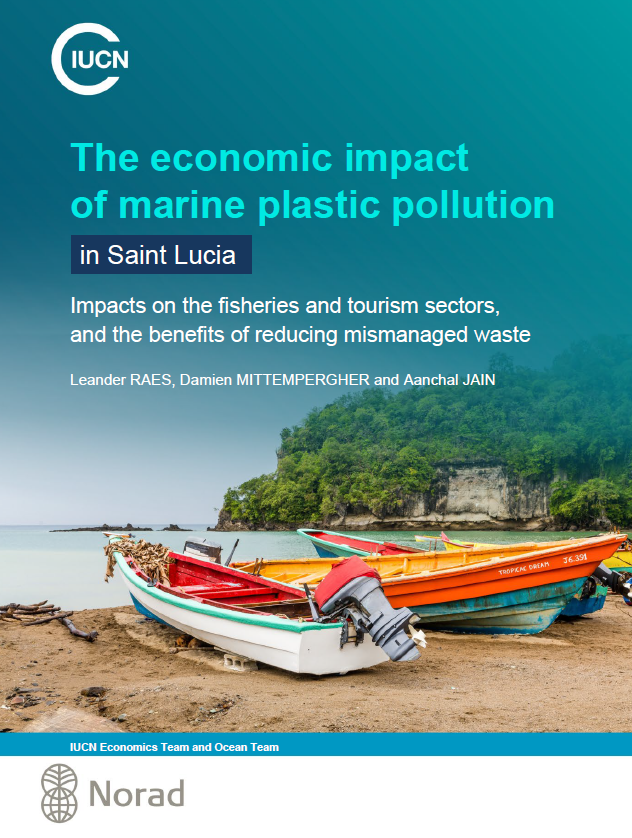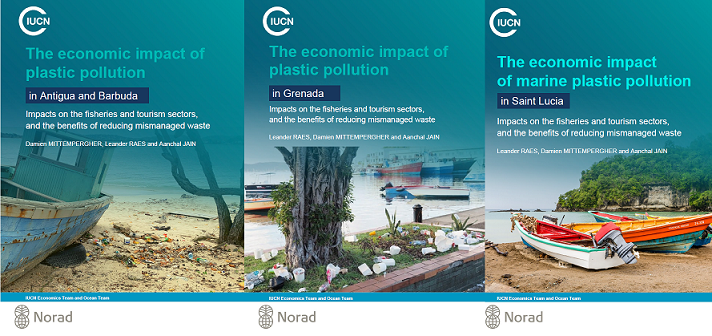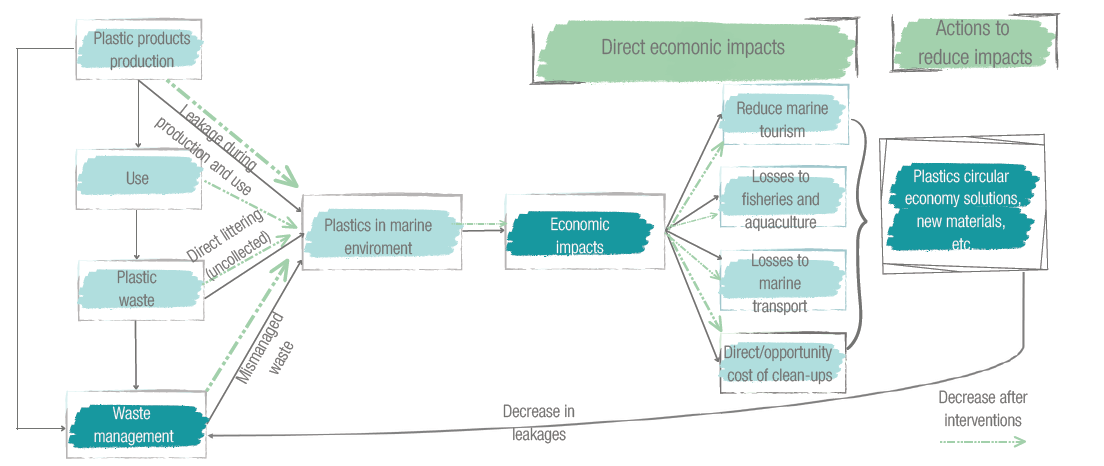The economic impact of plastic pollution on Saint Lucia
This economic brief shows the estimated impact of marine plastic pollution on fisheries and tourism in St Lucia. Marine plastic pollution can generate significant economic costs in the form of gross domestic product (GDP) reductions, estimated at up to US$7 billion (globally) for 2018 alone (WWF, 2021).
This study focused on estimating direct costs for the economy of Saint Lucia, looking at costs for the fisheries and tourism sectors. Some costs, such as the impact of ghost fishing, and benefits, such as the potential of selling plastics on the market for recyclables, were not included. In addition, mismanaged plastics also have broader impacts on blue natural capital assets and marine biodiversity, which can generate additional impacts to the economy. With this said, it is difficult to quantify the impact on marine ecosystems and biodiversity (Tekman et al., 2022). The impact of marine plastics must be seen in light of the multiple stressors, which impact the marine environment and the blue economy that depends on it.
This is one of three briefs produced for the Caribbean as part of the Plastic Waste Free Islands project. In 2019, with support from the Norwegian Agency for Development Cooperation (Norad), IUCN launched the Plastic Waste Free Islands (PWFI) project, as part of its global Close the Plastic Tap Programme. PWFI focused on three islands in the Caribbean and three islands in the Pacific. Implemented in Fiji, Vanuatu and Samoa in Oceania and Antigua and Barbuda, Saint Lucia and Grenada in the Caribbean, the project promoted island circular economy and demonstrated effective, quantifiable solutions to address plastic leakage from Small Island Developing States (SIDS).
Summaries of this report are available in English, French and Spanish here. A graphical summary of economic impacts for the Caribbean is available here in English.




